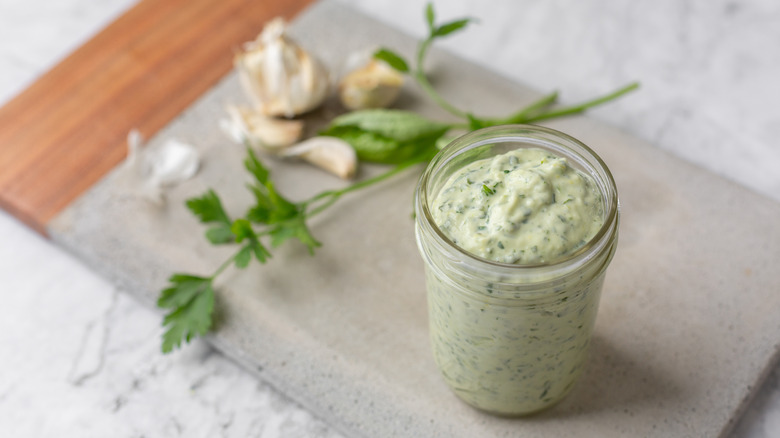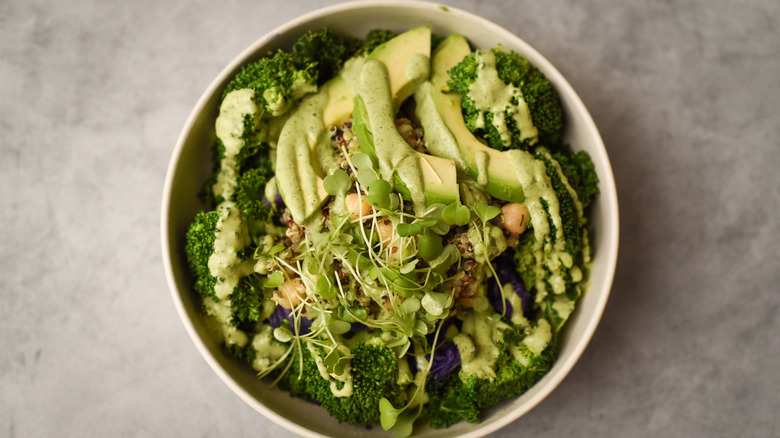What Is Green Goddess Dressing, And Why Is It Popular Again?
With the abundance of salad dressings out there these days, it's sometimes hard to find one that's especially memorable. But when it comes to one particularly classic option, the name alone has true staying power. Green goddess sounds as if it should be conjured and served by Mother Earth herself, but what is this uniquely titled topping really made of?
The components can be customized, but there are some fundamental elements in a green goddess dressing — among them, yogurt or mayo, herbs (often including licorice-y tarragon), citrus, oil, seasonings, aromatics like garlic, and a salty element like capers, anchovies, or Worcestershire sauce. This combination of ingredients makes for a creamy, well-balanced, and super-flavorful dressing.
Green Goddess dressing is something of a retro item, and its popularity probably peaked in the 70s. Its identity as a wholesome option had something to do with this, as wellness culture and so-called health foods became increasingly popular in that era. Its modern comeback may be attributed to its social media-friendly color: Green is associated with freshness, and also contributes major aesthetic appeal in a visually hungry world. Its adaptability may also play a part. It's easy to tweak for dietary preferences (swap anchovy for capers to make it vegetarian).
The long life of the green goddess
It's possible that today, the popularity of green goddess comes from its versatility and pure deliciousness. But the history of this dressing suggests it has endured as a culinary staple for nearly a century. Perhaps the earliest evidence of this dressing was in 1927 when a recipe appeared in the Oakland Tribune. Apparently, it was served at San Francisco's Palace Hotel to celebrate a local production of the stage show called "The Green Goddess." By the 1950s, packaged versions began cropping up on grocery store shelves. Wishbone debuted their iteration in 1967 (and ran an ad featuring a woman who looked to be a relative of The Green Giant). This dressing had a moment in the 1970s, possibly as a result of this commercial push.
To this day, green goddess remains a great option for just about any salad, from grilled romaine and corn to green bean and tomato panzanella. It also makes a tasty condiment for everything from seafood like an herby lemon butter fish to juicy baked pork chops. It's also an excellent dip for crudités or tossed with roasted veggies. Because of the adaptability of the recipe and the abundance of herbs called for, green goddess is a great dressing to whip up from your end-of-summer herb garden. Whether you concoct your own green goddess or grab one from the store, you'll be participating in a long and vibrantly delicious salad dressing history.

